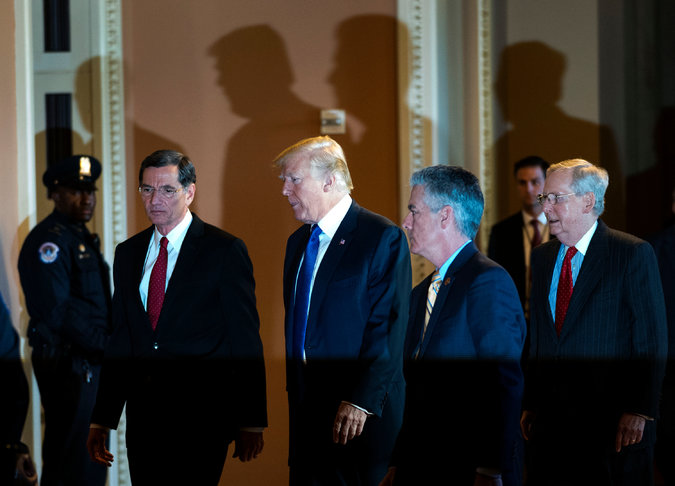The China Market: Navigating Challenges For BMW, Porsche, And Competitors

Table of Contents
Intense Competition and Market Saturation
The Chinese automotive market is fiercely competitive, a battleground for both established international players and rapidly rising domestic brands. This intense competition manifests in several ways, creating significant challenges for luxury automakers like BMW and Porsche.
-
Rise of Domestic Brands: Chinese electric vehicle (EV) manufacturers, such as BYD, NIO, and Xpeng, are rapidly gaining market share. Their competitive pricing, advanced technology, and understanding of local consumer preferences pose a significant threat to established international brands. The success of these domestic players highlights the importance of understanding and adapting to the shifting landscape of the Chinese automotive industry.
-
International Brand Competition: The China market isn't just a battle between domestic and international players; it's also a fight among the global giants. Mercedes-Benz, Audi, and other luxury brands are all vying for the same consumer base, leading to intense price wars and sophisticated marketing battles. This necessitates a highly competitive strategy, including innovative product development and targeted marketing campaigns.
-
Government Policies: The Chinese government actively promotes the development of domestic automakers through various policies, including subsidies for EVs and stricter regulations for foreign brands. These policies create an uneven playing field, requiring international players to carefully navigate the regulatory landscape and adapt their strategies accordingly.
-
Market Segmentation: Despite the intense competition, opportunities exist within specific market segments. Identifying and targeting niche markets, such as high-performance EVs or luxury SUVs catering to specific consumer demographics, can be a crucial strategy for success. Understanding regional variations in consumer preferences is vital for effective market segmentation.
Understanding Chinese Consumer Preferences
Chinese car buyers are sophisticated and their preferences are evolving rapidly. Successfully penetrating the China market requires a deep understanding of these preferences and tailoring products and marketing strategies accordingly.
-
Technology Focus: Chinese consumers place a strong emphasis on technology and innovative features. Advanced driver-assistance systems (ADAS), connectivity features, and cutting-edge infotainment systems are crucial selling points. Failing to offer the latest technologies can make a luxury brand appear outdated and less desirable.
-
Electric Vehicle Preference: Environmental concerns and government incentives are driving a strong preference for electric vehicles (EVs) and hybrid models. Luxury car manufacturers must invest heavily in their EV offerings to remain competitive in the China market. This includes not only the vehicles themselves, but also the supporting infrastructure, like charging networks.
-
Brand Image and Social Status: For many Chinese consumers, a car is more than just transportation; it's a symbol of status and success. Brand image and social perception play a critical role in purchasing decisions. Luxury brands need to carefully cultivate their brand image and resonate with the aspirations of their target audience.
-
Social Media Influence: Social media platforms like WeChat and Weibo significantly impact purchasing behavior in China. Online reviews, influencer marketing, and targeted digital advertising campaigns are essential components of a successful marketing strategy. Ignoring this powerful influence can be detrimental.
-
Regional Differences: China's vast size and diverse regions mean that consumer preferences vary significantly. A marketing campaign that succeeds in one region might fail in another. Tailoring marketing messages and product offerings to specific regional preferences is crucial for maximizing market penetration.
Navigating Regulatory and Governmental Hurdles
The regulatory environment in China presents significant challenges for foreign automakers. Understanding and navigating these complexities is essential for success.
-
Import and Sales Permits: Obtaining the necessary permits and licenses to import and sell vehicles in China can be a lengthy and complex process. Navigating this bureaucratic maze requires significant expertise and resources.
-
Emissions Standards: China has stringent emissions standards, particularly for electric vehicles. Meeting these requirements necessitates significant investment in research and development, as well as adapting production processes.
-
Data Localization: Data localization regulations require companies to store user data within China's borders, posing challenges for data security and privacy. Compliance with these regulations is crucial, requiring significant investment in infrastructure and security measures.
-
Political Landscape: The evolving political landscape and government policies can significantly impact foreign businesses. Staying informed about changes in government regulations and adapting strategies proactively is vital for long-term success.
Supply Chain Disruptions and Logistics
The vast geographical expanse of China, coupled with recent global events, presents unique supply chain and logistical challenges.
-
Global Chip Shortages: The global chip shortage and other supply chain disruptions have highlighted the vulnerability of the automotive industry. Effective supply chain management is critical to ensuring timely delivery of vehicles and parts.
-
Transportation Challenges: Efficiently transporting vehicles and parts across China's vast territory is a logistical undertaking requiring a well-established distribution network and strategic partnerships.
-
Dealership Delivery: Ensuring timely delivery of vehicles to dealerships across the country is crucial for maintaining customer satisfaction and minimizing delays. Robust logistics and inventory management systems are essential.
-
Risk Mitigation: Strategies for mitigating supply chain risks and building resilience are crucial, including diversifying sourcing, developing alternative transportation routes, and investing in inventory buffers.
Developing Effective Marketing and Distribution Strategies
Establishing a strong presence in the China market requires carefully crafted marketing and distribution strategies.
-
Localized Marketing: Marketing messages and campaigns must be tailored to resonate with the specific cultural nuances and preferences of Chinese consumers. Generic marketing approaches are unlikely to succeed.
-
Digital Marketing: Leveraging digital marketing channels and social media platforms is crucial for reaching the target audience. This includes developing engaging content, utilizing targeted advertising, and monitoring online sentiment.
-
Distribution Network: Building a robust and extensive distribution network is essential for reaching consumers across the vast Chinese market. This includes establishing strong relationships with dealers and distributors across different regions.
-
Customer Service: Investing in localized customer service and after-sales support is crucial for building brand loyalty and ensuring customer satisfaction.
Conclusion
The China market presents both immense opportunities and significant challenges for luxury automakers like BMW and Porsche. Successfully navigating this complex landscape demands a thorough understanding of consumer preferences, regulatory hurdles, and competitive dynamics. By adapting their strategies to address these challenges, including localized marketing, robust distribution networks, and proactive supply chain management, luxury brands can tap into the enormous potential of the China market. To thrive in the China market, companies must remain agile and responsive to the ever-evolving environment. Don't miss out on the potential; start planning your China market entry strategy today!

Featured Posts
-
 The Magnificent Sevens 2024 Decline A 2 5 Trillion Market Value Plunge
Apr 29, 2025
The Magnificent Sevens 2024 Decline A 2 5 Trillion Market Value Plunge
Apr 29, 2025 -
 Rethinking Middle Management Their Critical Role In Company Performance And Employee Satisfaction
Apr 29, 2025
Rethinking Middle Management Their Critical Role In Company Performance And Employee Satisfaction
Apr 29, 2025 -
 Chinas Nuclear Power Expansion 10 New Reactors Approved
Apr 29, 2025
Chinas Nuclear Power Expansion 10 New Reactors Approved
Apr 29, 2025 -
 Pitchers Name S Case For A Mets Starting Rotation Spot
Apr 29, 2025
Pitchers Name S Case For A Mets Starting Rotation Spot
Apr 29, 2025 -
 Minnesota Snow Plow Name Winners Announced
Apr 29, 2025
Minnesota Snow Plow Name Winners Announced
Apr 29, 2025
Latest Posts
-
 The Impact Of Zombie Office Buildings On Chicagos Real Estate Market
Apr 29, 2025
The Impact Of Zombie Office Buildings On Chicagos Real Estate Market
Apr 29, 2025 -
 Key Republican Groups Threaten To Block Trumps Tax Bill
Apr 29, 2025
Key Republican Groups Threaten To Block Trumps Tax Bill
Apr 29, 2025 -
 Zombie Buildings In Chicago Understanding The Office Real Estate Collapse
Apr 29, 2025
Zombie Buildings In Chicago Understanding The Office Real Estate Collapse
Apr 29, 2025 -
 Can Trumps Tax Cuts Survive Internal Republican Opposition
Apr 29, 2025
Can Trumps Tax Cuts Survive Internal Republican Opposition
Apr 29, 2025 -
 Chicagos Office Market Meltdown The Rise Of Zombie Buildings
Apr 29, 2025
Chicagos Office Market Meltdown The Rise Of Zombie Buildings
Apr 29, 2025
